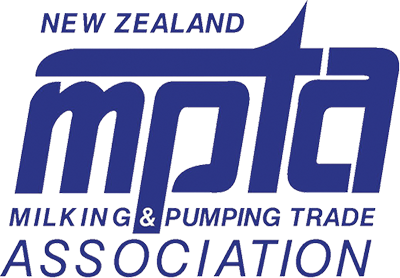Milking Management - Part 1
Monday, 9th March 2009 There is a growing number of Veterinarians qualifying through the Milking Machine Testers Course and becoming actively involved in milking machines. I think we should welcome this trend, as our two industries need to overlap slightly in order to provide Farmers with the tools they need for effective milk extraction. We also need to provide the diagnostic skills and remedial solutions required should there be a problem.
I am however concerned about the amount of overlap we are seeing, which is largely due the frustration the Vets have with getting good unified information from the milking machine industry.
If we don't want the Vets to invade what is our field of expertise, we must up skill ourselves with the knowledge they require to complement theirs and the Farmers expertise.
To this end NZMPTA will be providing this information through a series of courses now available dealing with Milking Management and Mastitis the next step after a Milking Machine Test.
A dry or static milking machine test tells us the equipment is operating according to the standards. This is very much like giving a car a warrant of fitness, which confirms all functionality is OK. The way the machine actually milks is something quite different. This is like actually driving the car, it may handle horribly, the brakes fade, the steering has no feel, the seats are uncomfortable, it has no power for passing etc. etc.
This is the next step, being able to establish why the interaction between an outwardly correctly functioning machine and the cow is breaking down. This is where we as an industry have to be able to assists the Vets, to be able to give them the confidence in us to access where the fault may lie or conversely assure them there is no fault. If we can't do this, as I have said, they will do it themselves. The danger I see, is that their depth of knowledge and experience in milking equipment will be limited, as is ours in animal health. In the main I would not expect them to be as well connected with the large international Oem's who are doing the bulk of the research work or disseminating this work to us.
The average cell count in NZ is steadily rising, America on the other hand is decreasing, given the current trend, very soon they will have a lower average than us. This is shocking news and puts more pressure on us and the Vets, increasing the need for a unified front to combat this situation.
In the last few years I have found a high cell count or mastitis problem is rarely due to the milking equipment. However there are three things a milking machine absolutely must deliver; Minimal cup slip, No teat end damage, clean milkout. If we are achieving these things the problem probably lies else where. This is the type of feedback the Vets require, enabling them to tick that box and move on to find the actual problem. The most likely causes I find being teats in poor condition, Farmers not culling or segregating for Staph Aureus infection etc. etc.
I am however concerned about the amount of overlap we are seeing, which is largely due the frustration the Vets have with getting good unified information from the milking machine industry.
If we don't want the Vets to invade what is our field of expertise, we must up skill ourselves with the knowledge they require to complement theirs and the Farmers expertise.
To this end NZMPTA will be providing this information through a series of courses now available dealing with Milking Management and Mastitis the next step after a Milking Machine Test.
A dry or static milking machine test tells us the equipment is operating according to the standards. This is very much like giving a car a warrant of fitness, which confirms all functionality is OK. The way the machine actually milks is something quite different. This is like actually driving the car, it may handle horribly, the brakes fade, the steering has no feel, the seats are uncomfortable, it has no power for passing etc. etc.
This is the next step, being able to establish why the interaction between an outwardly correctly functioning machine and the cow is breaking down. This is where we as an industry have to be able to assists the Vets, to be able to give them the confidence in us to access where the fault may lie or conversely assure them there is no fault. If we can't do this, as I have said, they will do it themselves. The danger I see, is that their depth of knowledge and experience in milking equipment will be limited, as is ours in animal health. In the main I would not expect them to be as well connected with the large international Oem's who are doing the bulk of the research work or disseminating this work to us.
The average cell count in NZ is steadily rising, America on the other hand is decreasing, given the current trend, very soon they will have a lower average than us. This is shocking news and puts more pressure on us and the Vets, increasing the need for a unified front to combat this situation.
In the last few years I have found a high cell count or mastitis problem is rarely due to the milking equipment. However there are three things a milking machine absolutely must deliver; Minimal cup slip, No teat end damage, clean milkout. If we are achieving these things the problem probably lies else where. This is the type of feedback the Vets require, enabling them to tick that box and move on to find the actual problem. The most likely causes I find being teats in poor condition, Farmers not culling or segregating for Staph Aureus infection etc. etc.



